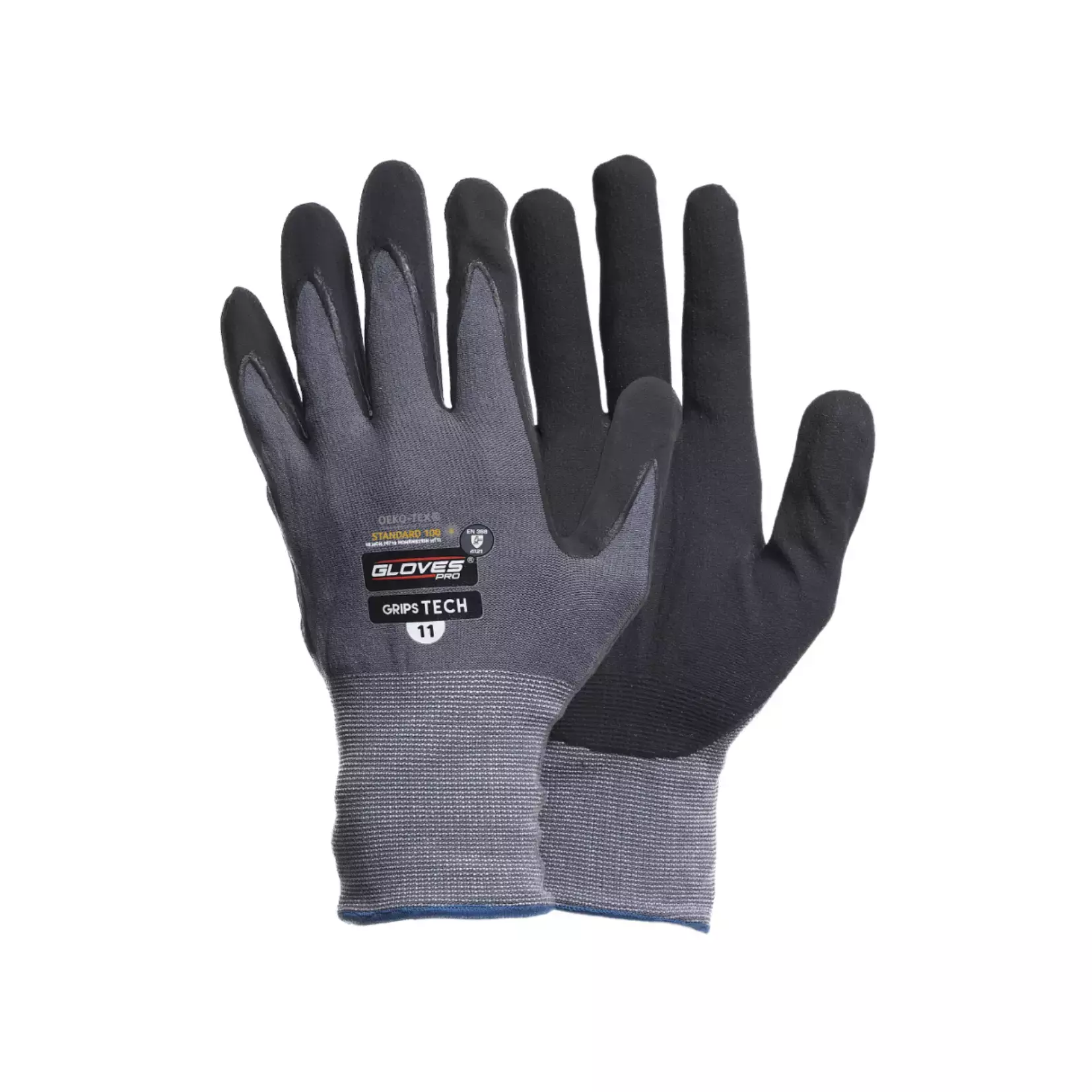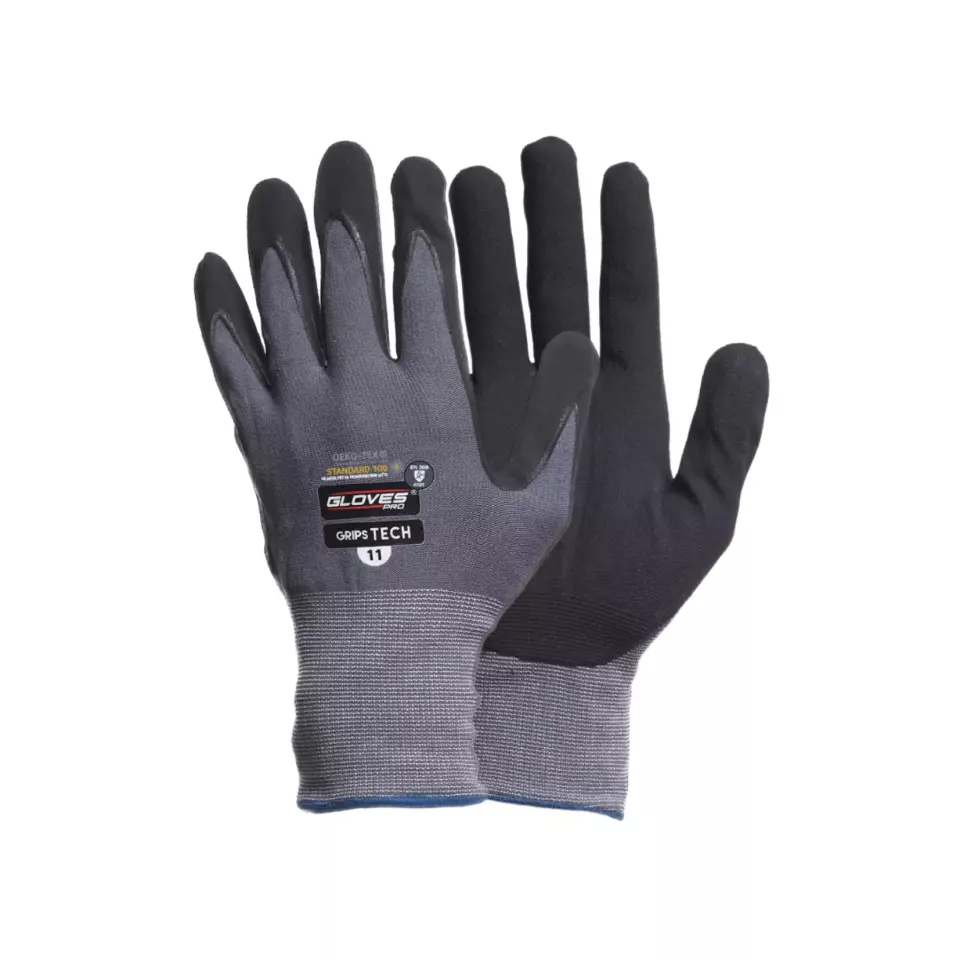
Features You'll Love

Palm Material · Nitrile
EN 388 · Abrasion Resistance Level 4, Cut Resistance, Coup Test Level 1, Puncture Resistance Level 1, Tear Resistance Level 2
The material used on the palm side of the glove, affecting grip, durability, protection level, and comfort during use.
Offers the highest level of protection against intense rubbing and wear from rough materials.
Provides minimal protection against cuts from a rotating blade under constant, low force.
Provides basic protection against punctures from blunt objects like splinters, not sharp points like needles.
Offers moderate resistance against snagging or catching on rough objects, preventing small rips from growing.

Coating Material · Nitrile
Grip Finish · Micro Foam
The material applied to glove surfaces to enhance grip, protection, and durability for specific work conditions and hazards.
The surface texture or coating on the palm and fingers that determines how securely the gloves can grip tools, materials, and surfaces during work tasks.
Gloves Pro
Flexible Work Gloves, 12 pairs
Flexible Work Gloves, 12 pairs
4.8 / 5
67,06 €
Price per 12 pairs
5,59 € / pair
Choose size
Free delivery
Features You'll Love

Palm Material · Nitrile
EN 388 · Abrasion Resistance Level 4, Cut Resistance, Coup Test Level 1, Puncture Resistance Level 1, Tear Resistance Level 2
The material used on the palm side of the glove, affecting grip, durability, protection level, and comfort during use.
Offers the highest level of protection against intense rubbing and wear from rough materials.
Provides minimal protection against cuts from a rotating blade under constant, low force.
Provides basic protection against punctures from blunt objects like splinters, not sharp points like needles.
Offers moderate resistance against snagging or catching on rough objects, preventing small rips from growing.

Coating Material · Nitrile
Grip Finish · Micro Foam
The material applied to glove surfaces to enhance grip, protection, and durability for specific work conditions and hazards.
The surface texture or coating on the palm and fingers that determines how securely the gloves can grip tools, materials, and surfaces during work tasks.
Product description
Gloves Pro Grips Tech nitrile coated work gloves, 12 pairs per pack.
Grips Tech is a versatile glove with a durable nitrile coating for a good grip. Breathable and flexible, they are ideal for work such as installation.